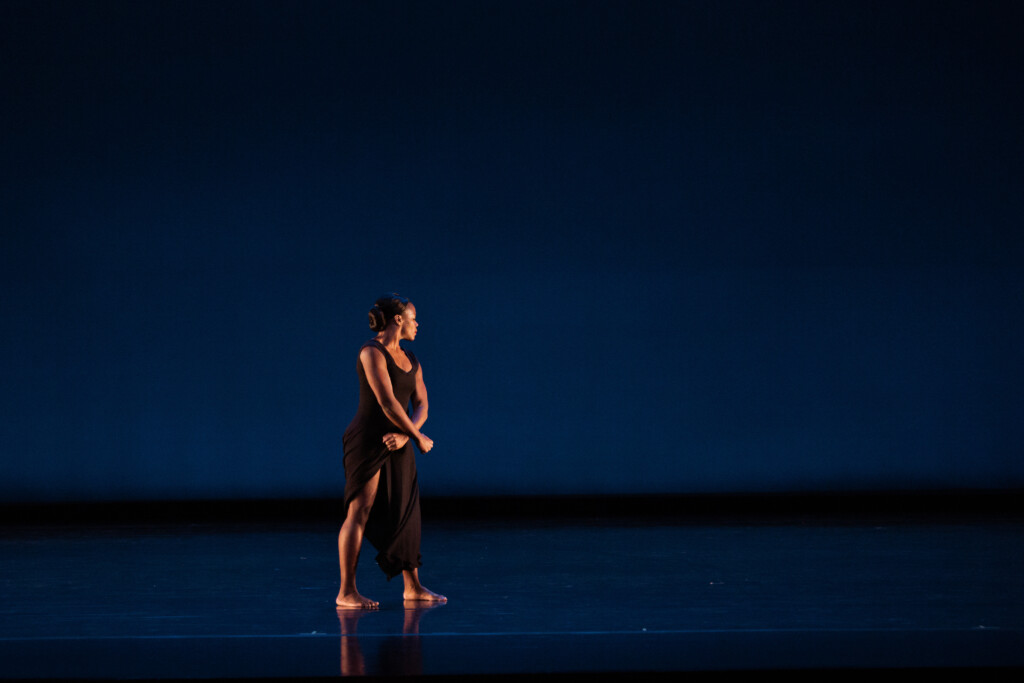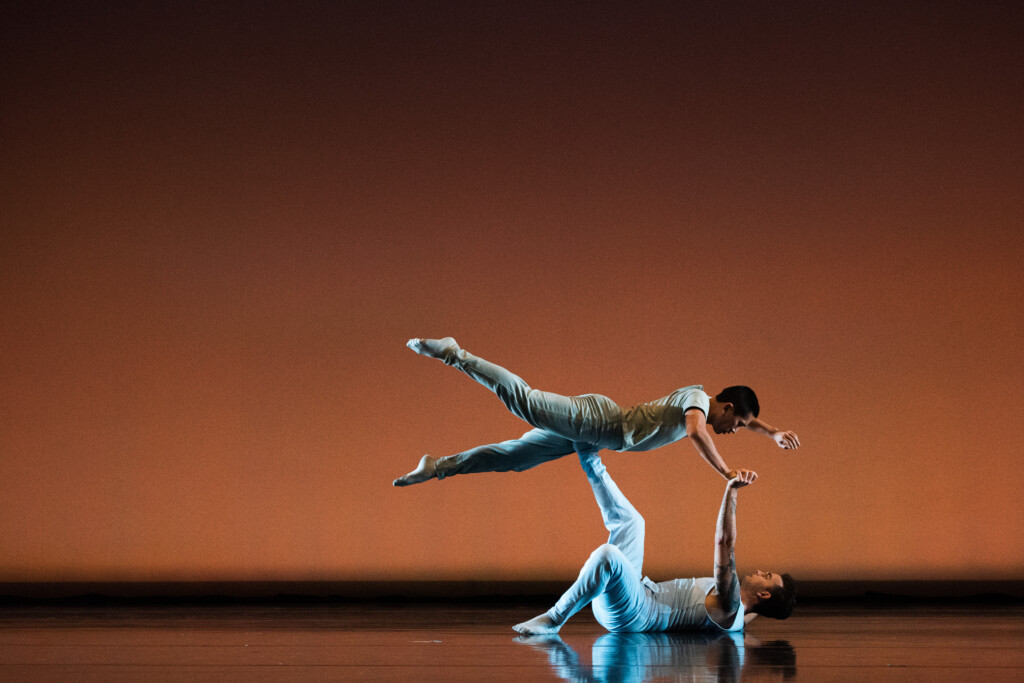There were many unforgettable solo moments in Repertory Dance Theatre’s (RDT) Compass concerts. There were many astounding moments featuring the RDT ensemble and guest dancers from Utah Valley University who demonstrated the authentic virtues of a tight-knit community who communicate through movement with mutual clarity of purpose and emotion.
Ursula Perry’s solo in Martha Graham’s Steps in the Street, a 1936 composition, which was part of the famous choreographer’s Chronicle, was a hallmark to set the standard for the rest of the evening. The purpose of ritual infuses RDT mission but in order for the restaging of historical works to succeed and connect with fresh contemporary relevance, dancers put their imprint on the movement, shaped by their emotional contexts they bring to the experience of performing Steps in the Street, which was created during the Great Depression and the rise of fascism in Europe. Perry was joined by the other women dance artists in the RDT company as well as six guest artists, students in Utah Valley University’s dance program.

No doubt the dancers absorbed the full range of knowledge and technique that Virginie Mécène from the Martha Graham Dance Company brought during her artistic residency in Orem at UVU. The work has a curious history. Graham’s company performed it for two years until 1938 and then the work lay dormant for 50 years before a silent black-and-white film surfaced, documenting a performance from the 1930s. Yuriko, one of the most famous Graham Company artists, then worked with Graham to reconstruct the movement for Steps in the Street. In fact, the reconstructed dance was first set on the Graham Company’s student ensemble.
The RDT presentation reminded the durability of Graham’s modernist revolution in dance. The dancers ensured that the gripping geometric character of movement made just as much sense in 2021 as it did in its premiere 85 years ago.

The woman in power motif also emerged in Ekstasis, a Graham solo originally choreographed in 1933 and reimagined by Mécène in 2017. Angela Banchero-Kelleher, an RDT alumni dancer and UVU professor, became the living sculpture that appears and then vanishes with the last notes of the music, especially arranged by Catalan composer Ramon Humet, who based it on a poem by Mario Lucarda. Banchero-Kelleher delivered an ethereal performance — a dreamlike exploration of the twists and pivots of movement in the body’s shoulders, hips and pelvis that was elemental to the Graham technique.
One of the most intriguing aspects of Bebe Miller’s Event, an RDT commission which premiered in 2019, is how it challenges an ensemble where the members enjoy a solid artistic chemistry to perform a work that requires them to confront each other. In a 2019 interview with The Utah Review, Miller talked about how she pushed them subtly into confronting their vulnerabilities – “get them a little more unsettled,” as she explains. In a video interview with RDT, Miller says that “in creating this dance, we all have to suspend ourselves in order to be ready to ‘I can do that; okay, yeah, I didn’t think about this; yeah, what about if you do this.’ I come in with a certain framework of event – storyness – a sense of who the dancers are but pretty much then it’s up for grabs and what happens is I watch them … I watch them fall … I watch who they talk to … I watch them forget themselves… and then that’s part of my palette.”
The reprise performance was sharper than the premiere, as the dancers appeared to be more comfortable with taking up the emotional challenges of the roles they assume in Event. Miller’s work is an astute study of social communication, with its clarifying visuals of what scholars and theorists have postulated about human communication. It includes text by Ain Gordon, as narrated by Miller, and a diverse sound and musical score by Michael Vargas. And, of course, the solo moments by Daniel Do added to the individual highlights of Compass.
Meanwhile, in Ihsan Rustem’s ebullient world premiere Hallelujah Junction, the dancers celebrated the roles in which they typically are most comfortable as an ensemble. There are specific commissions where choreographers encapsulate perfectly the spectrum of personalities and artistic strengths of the RDT company of dancers. One example is the 2016 work Theatre by Danielle Agami. Rustem’s creation is definitely another.

Making marvelous use of John Adams music by the same title, Rustem showered the dancers with an immensely pleasing bounty of joyful movement and gestures. The dancers turned the stage into a playground. The rapid-fire succession of solos featuring each of the dancers and then some fantastic moments of coupling were followed by the exquisite duet with Dan Higgins and Jon Kim. Rustem always dreamed of setting his own choreography to this particular music and RDT dancers were the lucky recipients of this gift. They did not shy away from showing their gratitude in a simply spectacular performance.
For those who missed the live performances of Compass or who want to relive the experience of seeing this exceptional concert, RDT will offer an on-demand streaming of the concert video, beginning Friday, Nov. 26. To purchase a virtual ticket, see the RDT website.

